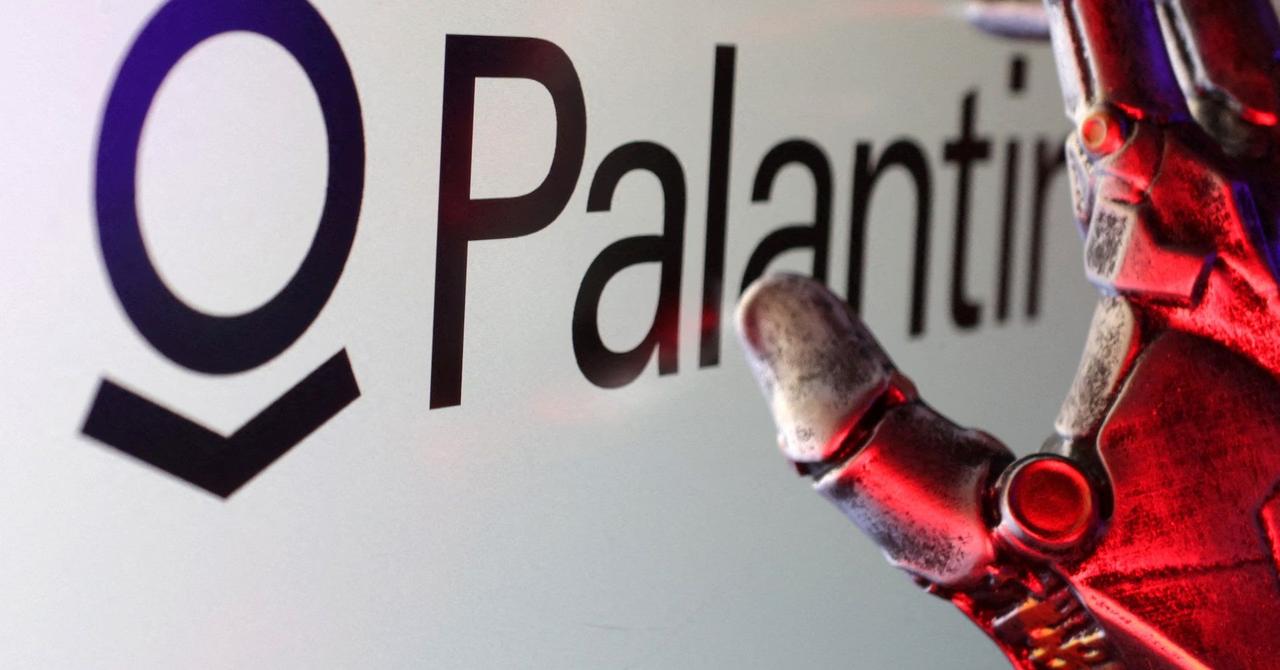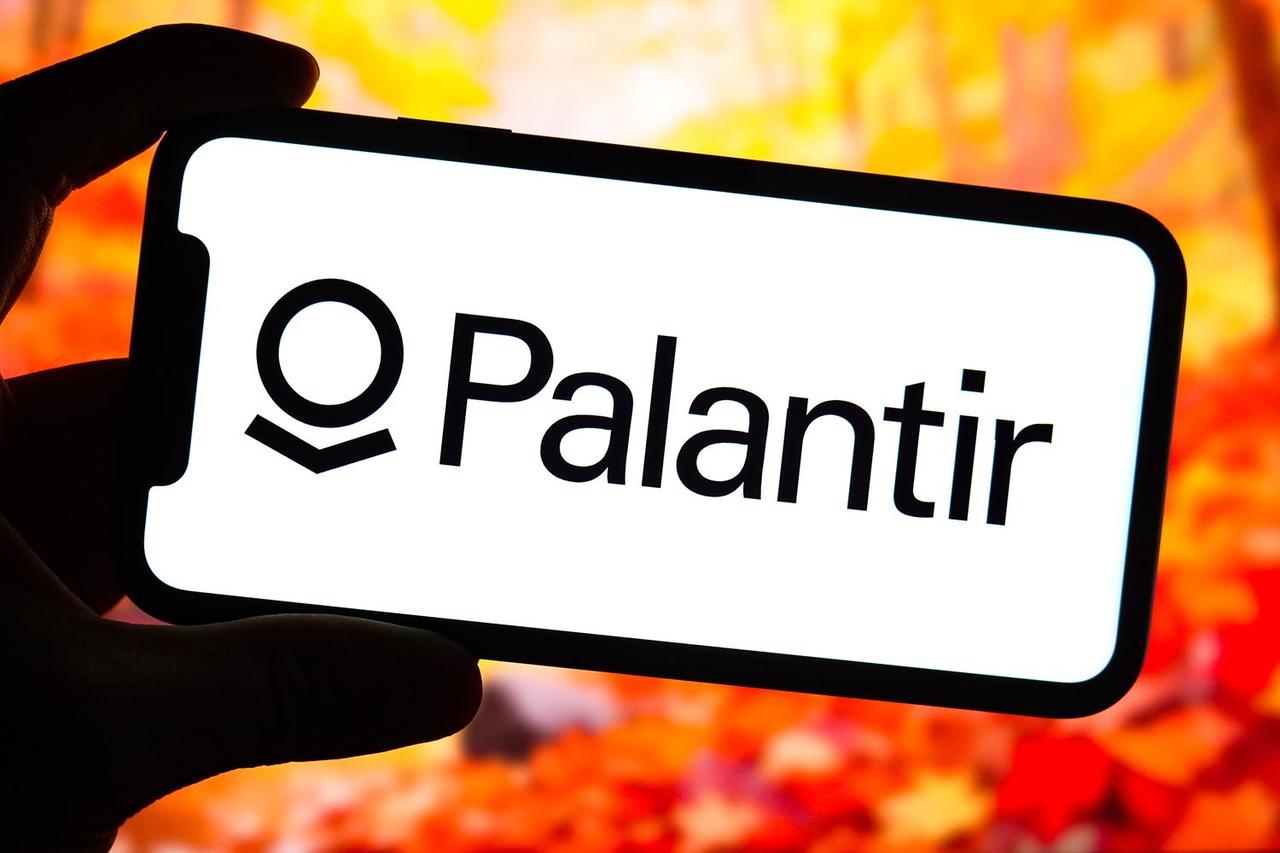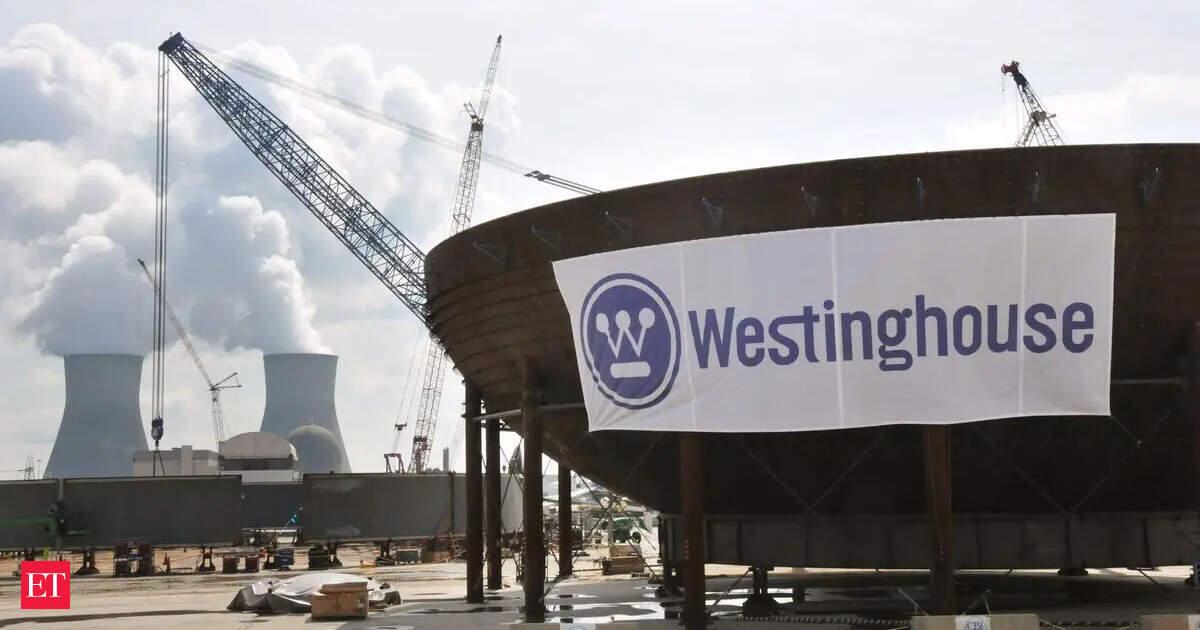Palantir Partners with The Nuclear Company to Develop AI-Driven Software for Nuclear Plant Construction
10 Sources
10 Sources
[1]
Palantir joins tech-nuclear bandwagon with software deal
The AI boom needs power, and startup The Nuclear Company aims to help build Palantir has become the latest tech company to jump on the nuclear power bandwagon - not by making a datacenter deal like Microsoft or Amazon, mind you, but by providing its data analytics software to a startup aiming to help build nuclear plants faster and cheaper. The data analytics software provider announced a deal with The Nuclear Company (TNC) to build a so-called Nuclear Operating System (NOS) designed to provide data-driven visibility into power-plant construction. The biz was founded in 2023 with the goal of serving as a project management company for new nuclear power projects. Rather than building and managing its own fleet of nuclear power plants, which has generally been the domain of local energy providers, TNC hopes to get investments from partner companies looking to build their own "fleet-scale" nuclear power plants. Unlike other startups focused on new designs, like small modular reactors, TNC aims to use existing designs and focus on sites that already have permits or licenses to operate. The idea behind that strategy, TNC said, is to speed up the nuclear power development process, reduce costs, and make projects more predictable. This century, nuclear buildouts in the US dropped to a crawl and have been plagued by long delays and cost overruns, but there's been a new burst of interest as hyperscalers race to build power-hungry datacenters for their AI buildouts. With that mini boomlet on the horizon, the startup has raised $70 million from a variety of backers, including a $53 million round earlier this year led by defense-focused venture capital firm Eclipse Ventures, as per Pitchbook. Palantir's role is to help develop NOS to "transform the construction of nuclear reactors into a data-driven, predictable process" that will allow TNC "to build plants faster and safer for less." Palantir engineers will be embedded within TNC to work on the project. According to the companies' statement, NOS will be able to monitor multiple aspects of a nuclear power project, from supply chains and calendars to regulatory assurance and on-site issues, all in real time. No timeline for the deployment of such software was mentioned in the press release. Additionally, it's unclear whether TNC has even managed to begin a single nuclear power project - its website doesn't indicate that anything but solicitations have been sent out to gauge contractor interest. The company said it wants to deploy 6 GW of nuclear power in its first round of projects, but nothing suggests those projects have gone beyond the twinkle-in-eye stage. While this may be a different sort of nuclear investment than the kind made by Amazon, Microsoft, and the like of late, Palantir's deal is still a case of a big partnership with an atomic energy firm that has yet to prove it's more than just hype. We reached out to both Palantir and The Nuclear Company with questions, but haven't heard back. ®
[2]
Palantir partners to develop AI software for nuclear construction
June 26 (Reuters) - Palantir Technologies (PLTR.O), opens new tab on Thursday said it was teaming up with a nuclear deployment company to develop an artificial intelligence-driven software system built for the construction of nuclear reactors. Nuclear energy has garnered renewed interest from investors and companies, as it is considered to be a cleaner source of fuel and more reliable than wind or solar energy. Palantir and Nuclear Company will jointly create the nuclear operating system (NOS), which will simplify construction, allowing the firm to build plants faster and at lower cost. The deal follows U.S. President Donald Trump's executive orders that aimed to boost U.S. nuclear energy production amid a boom in demand from data centers and AI. The orders, signed in May, direct the nation's independent nuclear regulatory commission to cut down on regulations and fast-track new licenses for reactors and power plants. Kentucky-based Nuclear Company will pay the data analytics company around $100 million over five years to develop the platform, according to a Palantir spokesperson. The industry is also expected to benefit from Trump's sweeping tax and spending bill, which rolled back many green-energy subsidies but preserved tax credits for nuclear energy. U.S. power consumption is estimated to reach record highs in 2025 and 2026 after stagnating for nearly two decades, as power-hungry data centers dedicated to AI and crypto miners plug into the grid. Reporting by Juby Babu in Mexico City and Jeffrey Dastin in San Francisco; Editing by Maju Samuel Our Standards: The Thomson Reuters Trust Principles., opens new tab Suggested Topics:Artificial IntelligenceGrid & InfrastructureNuclearFuel Oil
[3]
Palantir plans AI software to speed up nuclear energy push
Palantir Technologies is working with a nuclear energy company to streamline the construction of nuclear reactors with AI. The collaboration, announced Thursday, comes amid growing interest in the sector from investors and corporations; nuclear is being hailed as a clean and dependable solution for the immense power needs of emerging technologies -- alongside rapidly scaling but only intermittently available renewables such as wind and solar. Together, Palantir and Nuclear Company -- a Kentucky-based firm -- say they'll develop a Nuclear Operating System (NOS). The software platform is intended to simplify the construction process, enabling faster and more cost-efficient deployment of nuclear plants. As part of the deal, Nuclear Company will pay Palantir approximately $100 million over a five-year period to build the software platform, a spokesperson told Reuters. "This partnership marks the first time Palantir's software will be used to help power the next generation of nuclear energy infrastructure," Mike Gallagher, Palantir's head of defense, said in a statement. This agreement follows four executive orders from President Donald Trump, signed in May, which call for expanding nuclear-energy production in response to rising electricity demand from AI data centers and cryptocurrency mining operations. The orders instruct the U.S. Nuclear Regulatory Commission to ease regulations and accelerate approval of new facilities. The orders also call for 400 gigawatts of nuclear reactors by 2050, and 10 large-scale reactors to be under construction by 2030. "Nuclear has the potential to be America's greatest source of energy addition. It works whether the wind is blowing, or the sun is shining, is possible anywhere and at different scales," Energy Secretary Chris Wright said in May. The nuclear industry also stands to gain from Trump's broader tax and spending package, which significantly reduced support for most forms of renewable energy while maintaining incentives for nuclear development. U.S. electricity use is projected to hit all-time highs this year and next. Some forecasts suggest that by 2030, AI-related data centers could account for 11% of the total U.S. electricity load, with other estimates run even higher. Without greater efficiency, "by the end of the decade, AI data centers could consume as much as 20% to 25% of U.S. power requirements," Rene Haas, CEO of chip-designer Arm, told The Wall Street Journal last year. "That's hardly very sustainable, to be honest with you."
[4]
Palantir and The Nuclear Company have signed a new $100M AI deal
Palantir Technologies Inc. and The Nuclear Company, a startup focused on project development, announced a deal Thursday where Palantir will receive $100 million over five years, according to Bloomberg. The agreement aims to develop AI software for the nuclear industry, with the goal of constructing nuclear plants more efficiently than China. Mike Gallagher, head of defense at Palantir Technologies Inc., stated that the US requires increased nuclear power to compete with China. Gallagher said, "The fact of the matter is we cannot win this strategic competition with China unless we revitalize our ability to build nuclear technology," in an interview on Bloomberg Television. Bloomberg reported that out of 61 nuclear power plants under construction globally, 26 are in Russia and 25 are in China. Currently, the US has no plants under construction. In the US, Vogtle Units 3 and 4 are the only two plants built in the last 30 years. Gallagher, a former US congressman, attributed the 15-year construction time to extensive regulation and the large volume of documentation required. Jonathan Webb, Chief Executive Officer of The Nuclear Company, said that Palantir's software is digitizing the paperwork required to construct the last plants, "so that when supply chain delays are happening, our teams on the front lines are aware of it." Webb and Gallagher intend to streamline construction at the startup, with the aim of delivering electricity by the 2030s, despite having no plants currently under construction. In May, executive orders signed by President Donald Trump called for 10 large-scale nuclear reactors to be under construction by 2030 and 400 gigawatts of total nuclear power by 2050, which would be over four times the country's current atomic energy capacity. Webb stated, "We need to get back to building, because if we don't build nuclear power plants, it's China and Russia that are doing that."
[5]
Palantir Strikes Nuclear Deal as AI Power Demand Surges
President Donald Trump has called for more nuclear power to make sure the U.S. is the world's leader in artificial intelligence. Palantir Technologies (PLTR) shares rose to a new record high Thursday as the data integration software maker is taking advantage of the soaring demand for electricity to drive artificial intelligence (AI) data centers by striking a deal with a big nuclear power plant builder. The company announced a strategic partnership with The Nuclear Company, which it calls the "leading gigawatt-scale deployment of nuclear power across America and pioneering the modernization of nuclear construction." The deal calls for the two firms to "co-develop and deploy NOS, the first AI-driven, real-time software system built exclusively for nuclear construction." NOS will be used to help The Nuclear Company build plants faster, safer, and at lower costs, Palantir said. Mike Gallagher, Head of Defense at Palantir, said the agreement "marks the first time Palantir's software will be used to help power the next generation of nuclear energy infrastructure." Gallagher added that by teaming up with The Nuclear Company, Palantir is "laying the foundation for a new era of resilient, intelligent and secure energy systems in the United States and beyond." Palantir noted that last month, President Donald Trump called for 400 gigawatts of nuclear power generation by 2050, and 10 large-scale reactors to be under construction by 2030 as a way to ensure that America has the electricity needed to lead the world in AI. The Nuclear Company CEO Jonathan Webb explained that with the creation of NOS, "we finally break the cycle of delays, deliver a new energy future, and protect America's nuclear leadership from China, so we don't lose it like we did manufacturing decades ago." Shares of Palantir Technologies set a new intraday record of $147.91 soon after the opening bell and recently were up more than 2% to $145.55. They are up about 95% this year.
[6]
Palantir Stock Sets Record After Company Strikes Deal for Nuclear Plant Software
President Donald Trump has called for more nuclear power to make sure the U.S. is the world's leader in artificial intelligence. Palantir Technologies (PLTR) shares rose to a record high Thursday as the data integration software maker struck a deal with a big nuclear power plant builder, taking advantage of the soaring demand for electricity to drive artificial intelligence data centers. The company announced a strategic partnership with The Nuclear Company, which it calls the "leading gigawatt-scale deployment of nuclear power across America and pioneering the modernization of nuclear construction." The deal calls for the firms to "co-develop and deploy NOS, the first AI-driven, real-time software system built exclusively for nuclear construction." NOS will be used to help The Nuclear Company build plants faster, safer, and at lower costs, Palantir said. Shares of Palantir set an intraday record high above $148 on Thursday. They finished up nearly 1% to $144.25, a closing record. They are up more than 90% this year. Mike Gallagher, Palantir's head of defense, said the agreement marked "the first time Palantir's software will be used to help power the next generation of nuclear energy infrastructure."
[7]
Palantir partners to develop AI software for nuclear construction - The Economic Times
Palantir and Nuclear Company will jointly create the nuclear operating system (NOS), which will simplify construction, allowing the firm to build plants faster and at lower cost. The deal follows U.S. President Donald Trump's executive orders that aimed to boost U.S. nuclear energy production amid a boom in demand from data centers and AI.Palantir Technologies on Thursday said it was teaming up with a nuclear deployment company to develop an artificial intelligence-driven software system built for the construction of nuclear reactors. Nuclear energy has garnered renewed interest from investors and companies, as it is considered to be a cleaner source of fuel and more reliable than wind or solar energy. Palantir and Nuclear Company will jointly create the nuclear operating system (NOS), which will simplify construction, allowing the firm to build plants faster and at lower cost. The deal follows U.S. President Donald Trump's executive orders that aimed to boost U.S. nuclear energy production amid a boom in demand from data centers and AI. The orders, signed in May, direct the nation's independent nuclear regulatory commission to cut down on regulations and fast-track new licenses for reactors and power plants. Kentucky-based Nuclear Company will pay the data analytics company around $100 million over five years to develop the platform, according to a Palantir spokesperson. The industry is also expected to benefit from Trump's sweeping tax and spending bill, which rolled back many green-energy subsidies but preserved tax credits for nuclear energy. U.S. power consumption is estimated to reach record highs in 2025 and 2026 after stagnating for nearly two decades, as power-hungry data centers dedicated to AI and crypto miners plug into the grid.
[8]
Palantir Just Teamed Up To Reinvent Nuclear Power: Here's What's At Stake - Palantir Technologies (NASDAQ:PLTR)
Palantir Technologies PLTR announced a strategic product partnership with The Nuclear Company on Thursday to develop AI software for nuclear construction. The Nuclear Company is leading the gigawatt-scale deployment of nuclear power across America and pioneering the modernization of nuclear construction. The companies will co-develop and deploy the Nuclear Operating System (NOS), the first AI-driven, real-time software system built exclusively for nuclear construction. Also Read: Palantir CEO Warns US-China AI Race Will Have One Winner, Urges West To Keep Up NOS will transform the construction of nuclear reactors into a data-driven, predictable process, enabling The Nuclear Company to build plants faster and safer for less. To be built on Palantir's Foundry platform, NOS will simplify the construction process for The Nuclear Company. The partnership comes as China continues to outpace the United States in new nuclear capacity, announcing 10 GW of reactors annually, while America has built just 2 GW in the last three decades. In late May, President Donald Trump issued executive orders calling for 400 GW of nuclear reactors by 2050 to ensure America has the baseload power required to lead the world in AI. The orders also call for 10 large-scale reactors to be under construction by 2030. According to a May report, the Trump administration has expanded Palantir's work across the federal government. Palantir explored selling its technology to the Social Security Administration and the IRS. Since Trump took charge, Palantir has secured more than $113 million in contracts (new and additional funds from existing). This does not include the $795 million DoD contract. Price Action: PLTR stock is up 1.33% at $144.80 premarket at last check Thursday. Read Next: Nvidia, Amazon, Tesla, Palantir Among Top Beneficiaries Of $1 Trillion Saudi Arabia AI Push, Analyst Says Photo: slyellow / Shutterstock.com PLTRPalantir Technologies Inc$144.310.99%Stock Score Locked: Edge Members Only Benzinga Rankings give you vital metrics on any stock - anytime. Unlock RankingsEdge RankingsMomentum98.99Growth97.40QualityNot AvailableValue2.49Price TrendShortMediumLongOverviewMarket News and Data brought to you by Benzinga APIs
[9]
Palantir partners to develop AI software for nuclear construction
Nuclear energy has garnered renewed interest from investors and companies, as it is considered to be a cleaner source of fuel and more reliable than wind or solar energy. Palantir and Nuclear Company will jointly create the nuclear operating system (NOS), which will simplify construction, allowing the firm to build plants faster and at lower cost. The deal follows U.S. President Donald Trump's executive orders that aimed to boost U.S. nuclear energy production amid a boom in demand from data centers and AI. The orders, signed in May, direct the nation's independent nuclear regulatory commission to cut down on regulations and fast-track new licenses for reactors and power plants. Kentucky-based Nuclear Company will pay the data analytics company around US$100 million over five years to develop the platform, according to a Palantir spokesperson. The industry is also expected to benefit from Trump's sweeping tax and spending bill, which rolled back many green-energy subsidies but preserved tax credits for nuclear energy. U.S. power consumption is estimated to reach record highs in 2025 and 2026 after stagnating for nearly two decades, as power-hungry data centers dedicated to AI and crypto miners plug into the grid. ---
[10]
Palantir partners to develop AI software for nuclear construction
(Reuters) -Palantir Technologies on Thursday said it was teaming up with a nuclear deployment company to develop an artificial intelligence-driven software system built for the construction of nuclear reactors. Nuclear energy has garnered renewed interest from investors and companies, as it is considered to be a cleaner source of fuel and more reliable than wind or solar energy. Palantir and Nuclear Company will jointly create the nuclear operating system (NOS), which will simplify construction, allowing the firm to build plants faster and at lower cost. The deal follows U.S. President Donald Trump's executive orders that aimed to boost U.S. nuclear energy production amid a boom in demand from data centers and AI. The orders, signed in May, direct the nation's independent nuclear regulatory commission to cut down on regulations and fast-track new licenses for reactors and power plants. Kentucky-based Nuclear Company will pay the data analytics company around $100 million over five years to develop the platform, according to a Palantir spokesperson. The industry is also expected to benefit from Trump's sweeping tax and spending bill, which rolled back many green-energy subsidies but preserved tax credits for nuclear energy. U.S. power consumption is estimated to reach record highs in 2025 and 2026 after stagnating for nearly two decades, as power-hungry data centers dedicated to AI and crypto miners plug into the grid. (Reporting by Juby Babu in Mexico City and Jeffrey Dastin in San Francisco; Editing by Maju Samuel)
Share
Share
Copy Link
Palantir Technologies has announced a $100 million partnership with The Nuclear Company to develop an AI-driven Nuclear Operating System (NOS) aimed at streamlining nuclear power plant construction. This move comes amid growing demand for electricity to power AI data centers and increased interest in nuclear energy.
Palantir's Strategic Move into Nuclear Energy
Palantir Technologies, a data analytics software provider, has announced a significant partnership with The Nuclear Company (TNC) to develop an AI-driven Nuclear Operating System (NOS). This $100 million, five-year deal aims to revolutionize the construction of nuclear power plants, making the process faster, safer, and more cost-effective
1
2
.
Source: Reuters
The Nuclear Operating System (NOS)
The NOS is designed to provide real-time, data-driven visibility into various aspects of power plant construction. It will monitor supply chains, calendars, regulatory assurance, and on-site issues, transforming nuclear reactor construction into a more predictable process
1
. Palantir engineers will be embedded within TNC to work on this project, marking the first time Palantir's software will be used in nuclear energy infrastructure3
.Driving Factors: AI Boom and Energy Demand
This partnership comes at a crucial time when the demand for electricity is soaring, primarily driven by power-hungry AI data centers and cryptocurrency mining operations. U.S. power consumption is projected to reach record highs in 2025 and 2026, with some forecasts suggesting that AI-related data centers could account for up to 25% of U.S. power requirements by 2030
3
4
.Political Landscape and Nuclear Energy Push
The collaboration aligns with recent executive orders signed by President Donald Trump, which aim to boost U.S. nuclear energy production. These orders direct the Nuclear Regulatory Commission to streamline regulations and expedite new licenses for reactors and power plants
2
. The administration has set ambitious goals, calling for 400 gigawatts of nuclear reactors by 2050 and 10 large-scale reactors to be under construction by 20304
5
.
Source: Quartz
Related Stories
Competitive Edge and Global Context
Mike Gallagher, Palantir's head of defense, emphasized the strategic importance of this partnership, stating, "We cannot win this strategic competition with China unless we revitalize our ability to build nuclear technology"
4
. This sentiment is echoed by the fact that out of 61 nuclear power plants under construction globally, 51 are in Russia and China, while the U.S. currently has none4
.Challenges and Opportunities
While the partnership presents significant opportunities, it also faces challenges. TNC, founded in 2023, is a relatively new player in the nuclear industry and has yet to begin any concrete nuclear power projects
1
. However, with $70 million in funding and Palantir's technological expertise, the company aims to deploy 6 GW of nuclear power in its first round of projects1
3
.
Source: Investopedia
As the world grapples with the increasing energy demands of AI and the need for clean, reliable power sources, this partnership between Palantir and The Nuclear Company represents a bold step towards addressing these challenges through innovative technology and streamlined construction processes.
References
Summarized by
Navi
[1]
[5]
Related Stories
Recent Highlights
1
Nvidia drops $20 billion on AI chip startup Groq in largest acquisition ever
Business and Economy

2
Meta acquires Manus for $2 billion, adding revenue-generating AI agents to its platforms
Business and Economy

3
China proposes world's strictest AI chatbot rules to prevent suicide and emotional manipulation
Policy and Regulation







